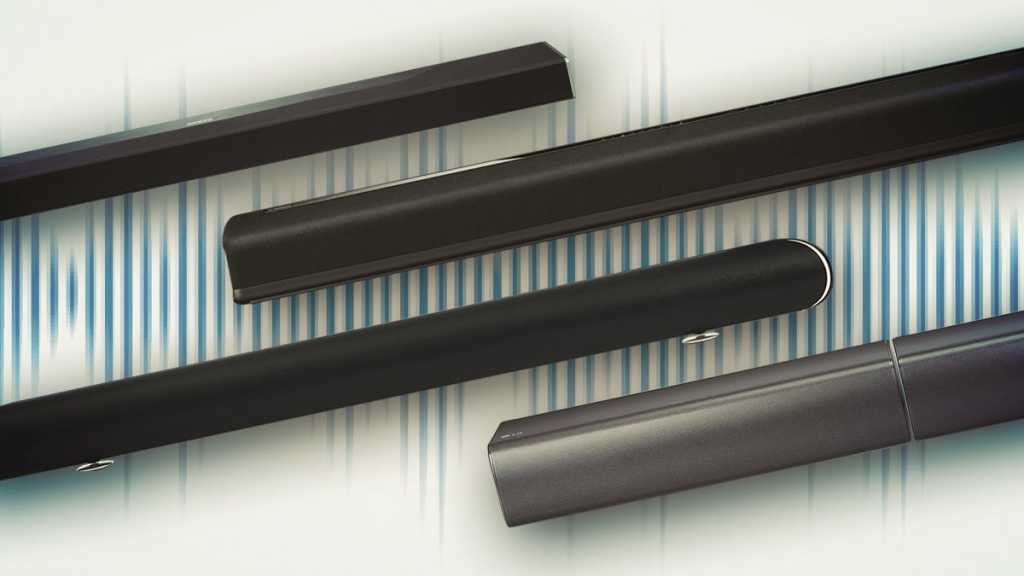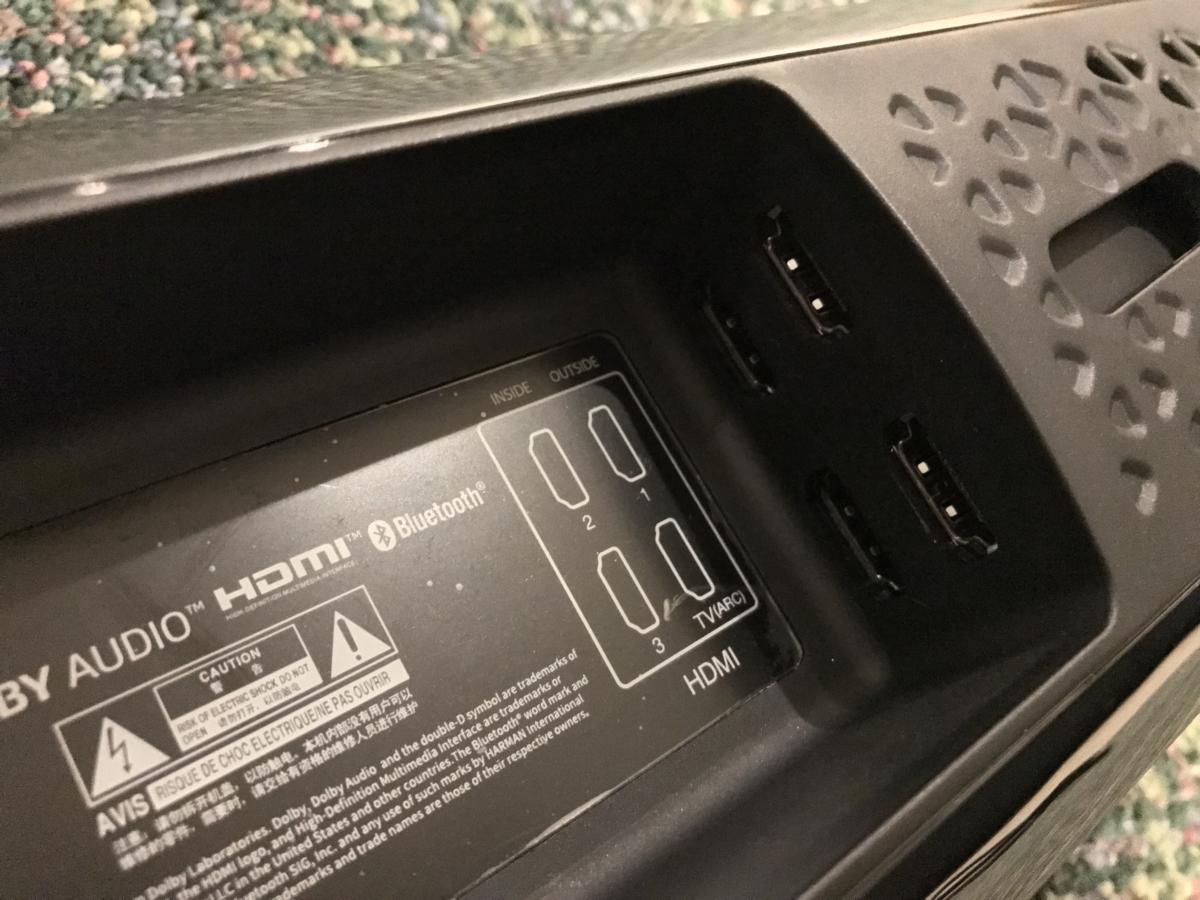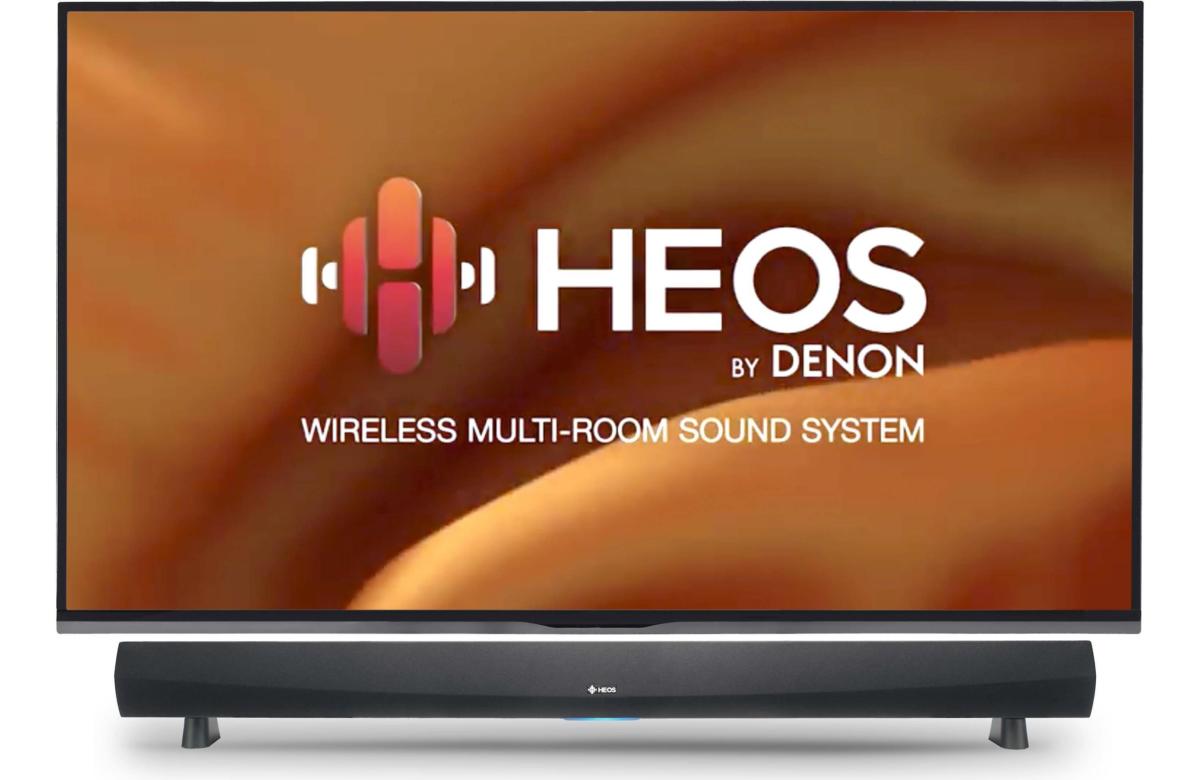Technology has enabled TVs to become ever flatter, thinner, and lighter, but it can’t overcome the laws of physics when it comes to audio. Filling a room with sound requires substantial speakers that can move a lot of air, and those types of speakers just won’t fit inside a thin TV chassis. That’s where soundbars come in.
These are our current top picks in budget, mid-range, and high-end categories, with brief summaries explaining our reasoning. These will change over time as new models come in for evaluation. Our soundbar reviews go into some depth, so we encourage you to follow the links to read them in their entirety so you can find exactly the right one for your needs..
Scroll down a little further and you’ll find our guidance on shopping for a soundbar, followed by explanations of the features you should consider when choosing one. We’ll explain all the latest soundbar technology and discuss the most important features you should look for.
Updated October 20, 2023 with a link to our Creative Stage SE Mini review. This soundbar has a pleasingly compact design and is easy to set up and operate, but its sound is disappointingly so-so, particularly when it comes to music.
Best soundbars for every budget
Polk Audio React — Best budget soundbar
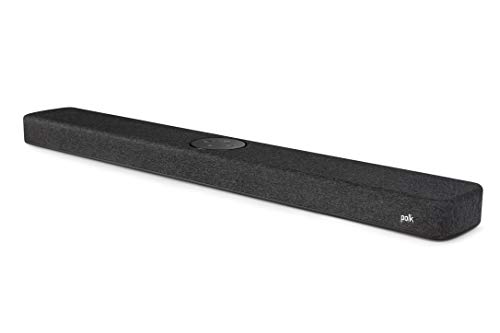
Pros
- Clean, nuanced sound given its price tag
- Alexa onboard, including multi-room audio support
- Expandable with wireless subwoofer and surround speaker options
- Night mode and dialog volume level adjustments
Cons
- No support for Dolby Atmos, DTS-X, or DTS Virtual:X
- HDMI ARC only (doesn't support eARC)
- Remote control buttons are flat and difficult to find in the dark
It doesn’t pack in Dolby Atmos support like many pricier soundbars do, but the Polk React sounds better than any competitors we’ve heard in its $250-ish price range, complete with detailed, nuanced audio and a surprisingly wide soundstage. The React comes with built-in Alexa, perfect for teeing up streaming music via voice commands, and the soundbar also supports Alexa Multi-Room Music, which means you can use it in Alexa speaker groups. Finally, you can upgrade the Polk React’s sound with Polk Audio’s optional wireless subwoofer and surround speaker kit.
Roku Streambar — Best budget soundbar, runner-up
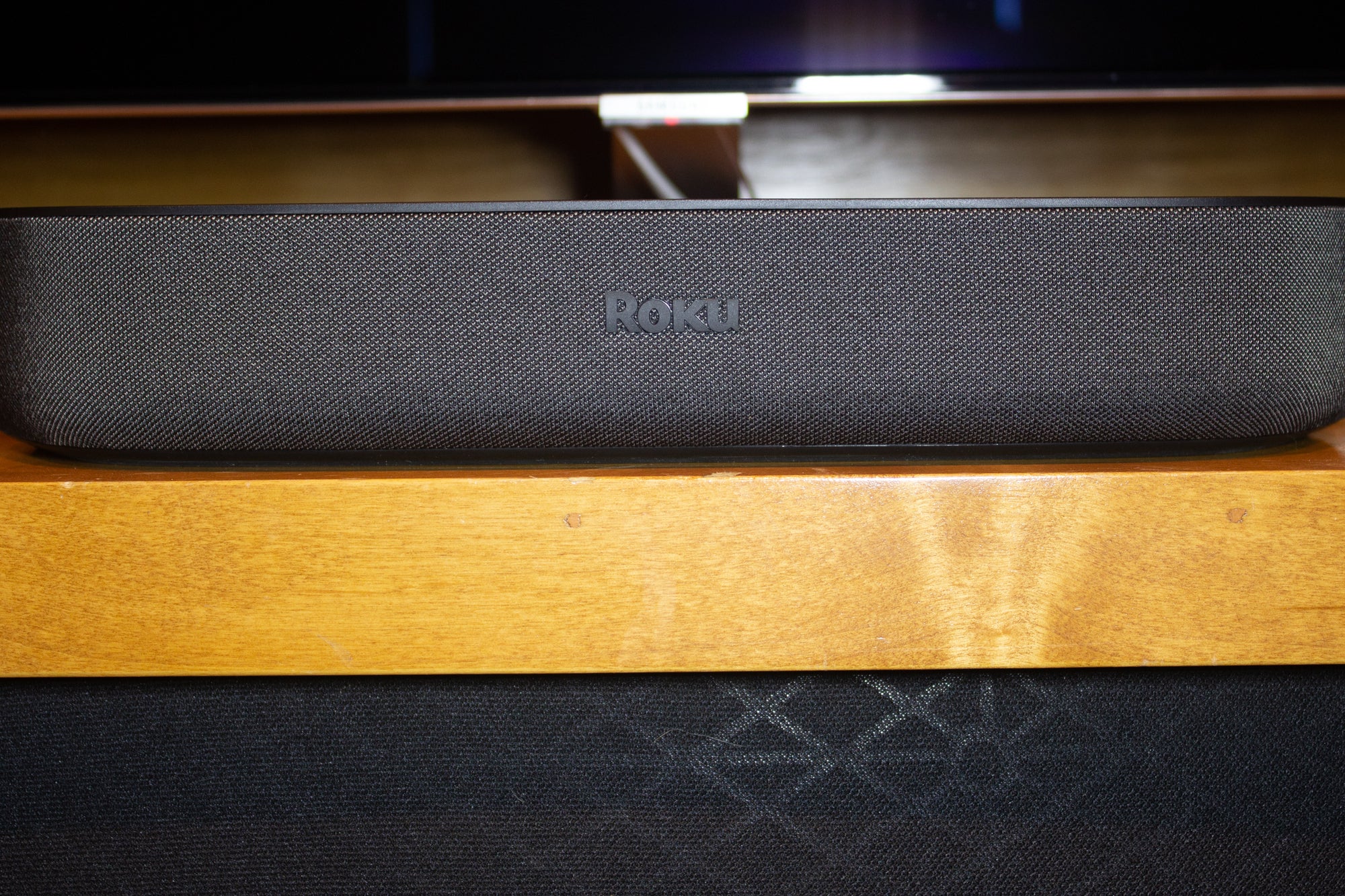
Pros
- A pretty good soundbar integrated with a very good media streamer
- Excellent remote control, with support for voice commands
- Can be upgraded with a wireless subwoofer and surround speakers
- Can also stream content from a NAS box or USB drive
Cons
- Not as good as a speaker as it is a streamer
- A little weak on bass response
- HDR support does not include Dolby Vision
If you’re strapped for cash but long to improve both your audio and streaming experiences, take a look at the Roku Streambar. It’s stronger in the latter category than the former, but its $130 price tag ($99 street price) makes it a very strong value.
Vizio M-Series M512a-H6 — Best mid-range soundbar
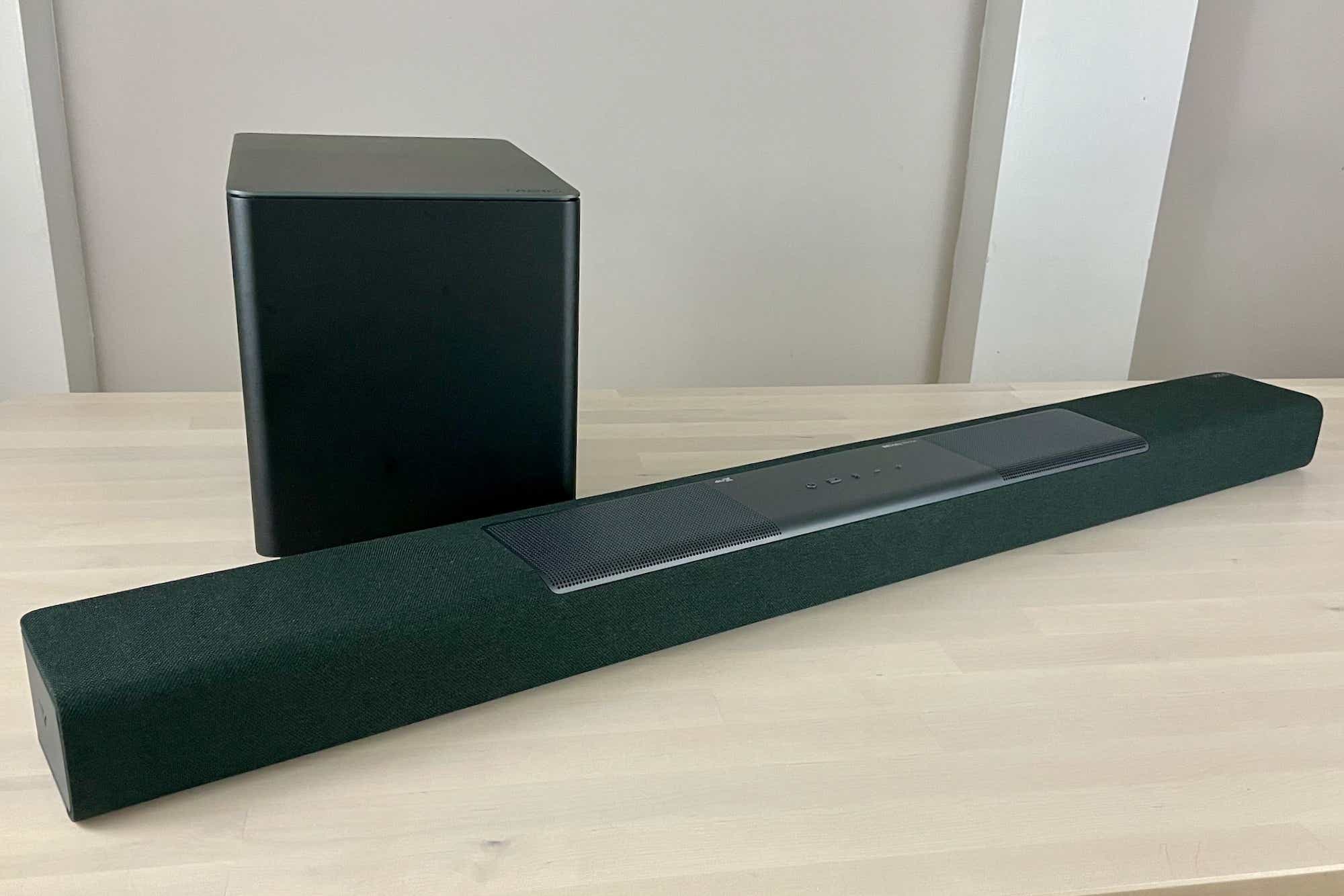
Pros
- Aggressively exciting audio performance
- Dolby Atmos and DTS:X support
- HDMI with eARC
- Can be augmented with a smart speaker via 3.5mm input or Bluetooth
Cons
- Bass can be boomy versus tight
- No Wi-Fi adapter
Vizio’s M512a-H6 soundbar delivers powerful, vibrant sound for a reasonable price, complete with Dolby Atmos and DTS:X support, an easy setup process, and plenty of adjustments for tinkering with audio settings. There’s no Wi-Fi support, but that’s not unusual for a soundbar in this price range.
Sonos Beam (2nd gen) — Best mid-range soundbar, runner-up
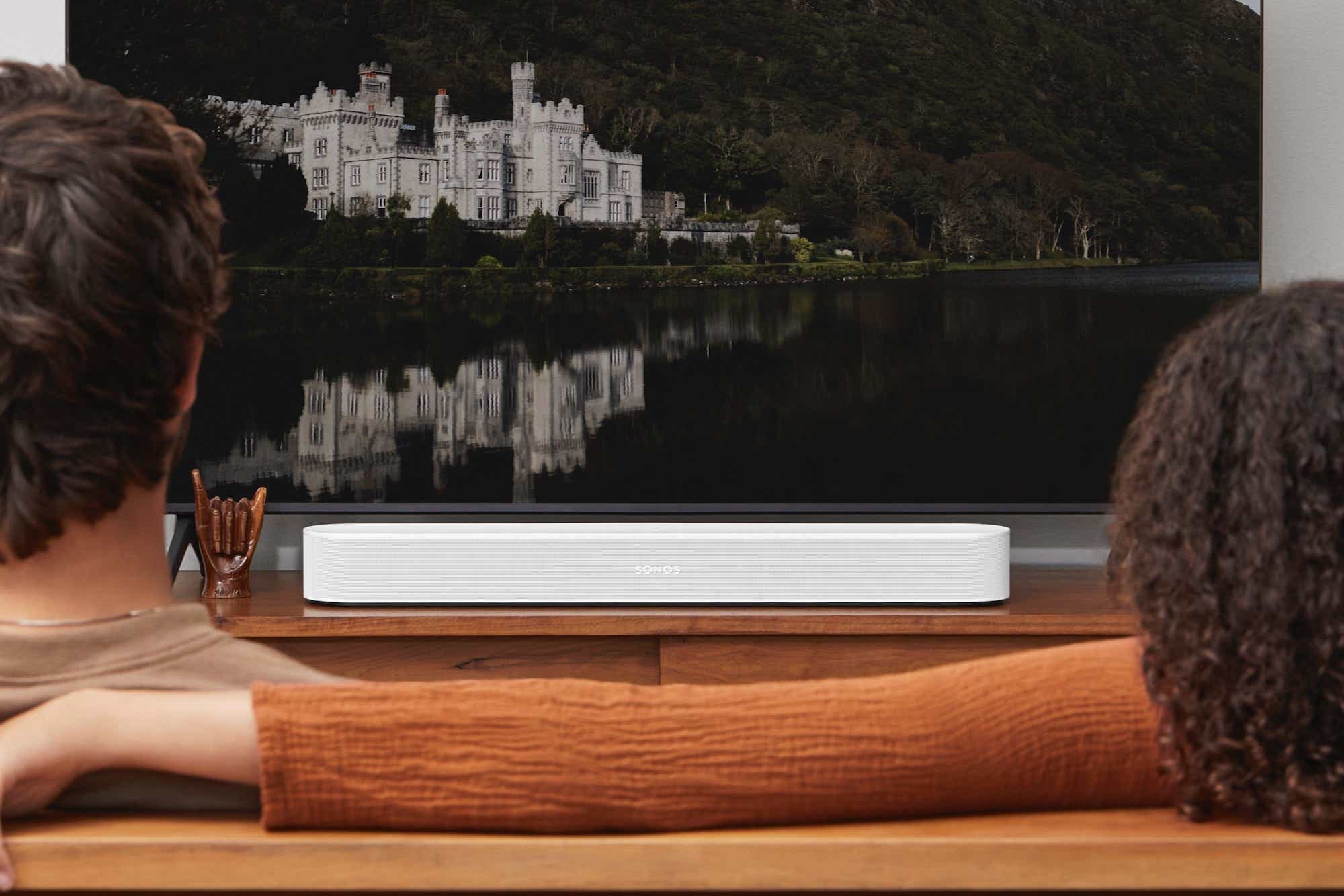
Pros
- Expansive sound
- Dolby Atmos and HDMI eARC support
- Can be upgraded to a full surround sound system with extra speakers and a subwoofer
- Apple AirPlay 2 support in addition to Sonos' own fabled multi-room audio support
Cons
- Virtualized height cues are subtle, and occasionally hissy
- Drivers begin to struggle at high volume
- DTS update didn't include DTS:X
The second-gen Sonos Beam is our runner-up pick for best mid-priced soundbar. A powerful speaker for its size, the refreshed Beam adds Dolby Atmos and eARC support, and you can expand it into a full-fledged 5.1-channel system by adding a wireless sub and wireless surround speakers. The Beam also has built-in support for your choice of Amazon Alexa or Google Assistant, so it can become a key element in your smart home system. Apple fans, meanwhile, will appreciate the Beam’s support for AirPlay 2.
Samsung HW-Q990C — Best high-end soundbar
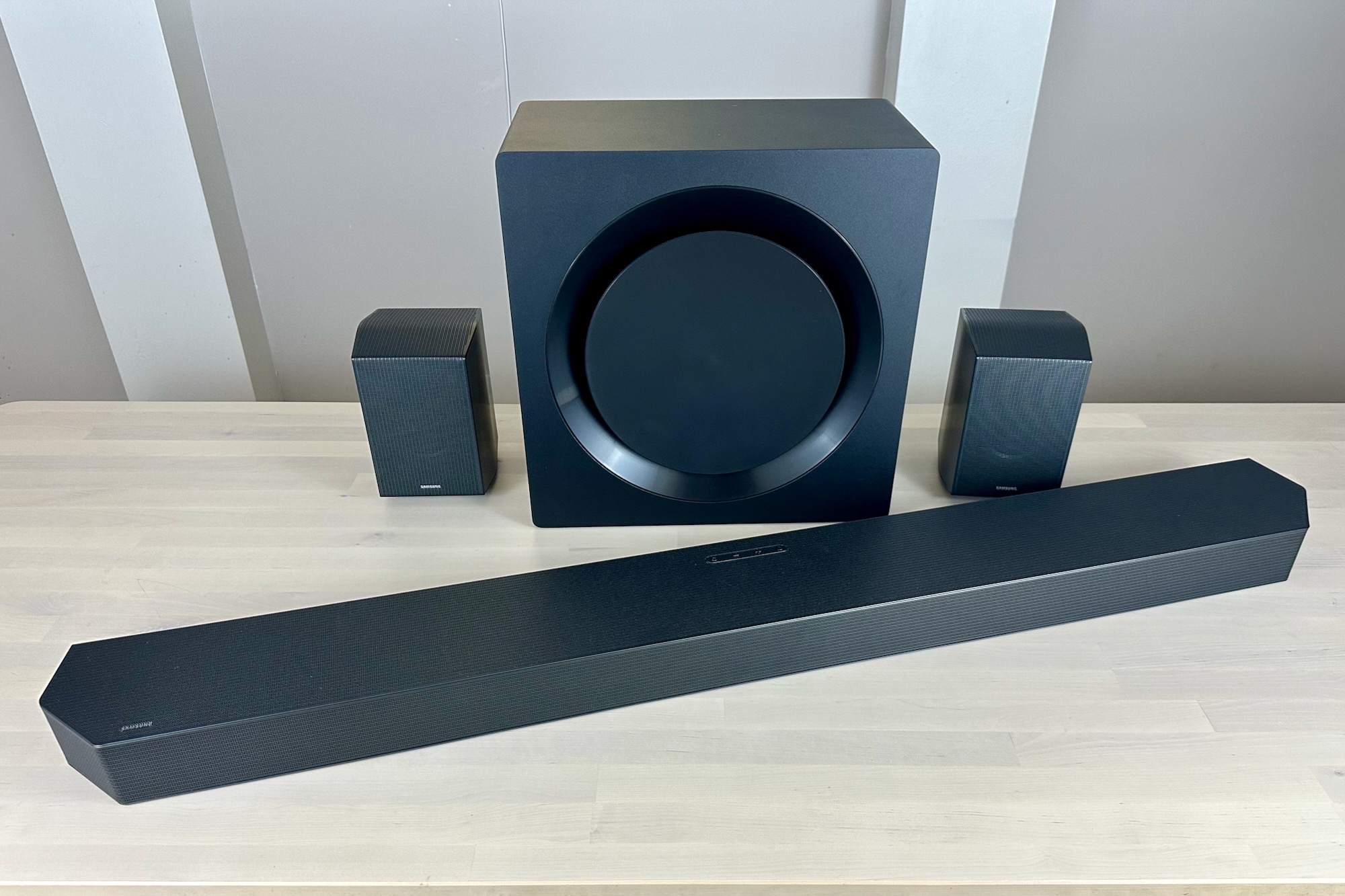
Pros
- Big, immersive, yet detailed and subtle sound
- Syncs its audio with Samsung TVs
- SpaceFit Sound room correction
- AirPlay 2 and Spotify Connect support
Cons
- No discrete volume for built-in Alexa
- Power cords for satellite speakers are too short
- Q-Symphony and wireless Dolby Atmos require a Samsung TV
- No Chromecast
The HW-Q990C doesn’t offer many improvements over Samsung’s recent flagship soundbars, but it still delivers stellar audio performance and a bevy of features, particularly for Samsung TV owners. Serving big, bold, yet refined sound, the HW-Q990C boasts a no-fuss setup process (well, short power cords notwithstanding), Dolby Atmos and DTS:X support, automatic room correction, and a couple of bonuses for Samsung TV owners, including wireless Atmos connectivity and Q-Symphony, a feature that syncs the soundbar’s audio with the TV’s speakers.
LG S95QR — Best high-end soundbar, runner-up
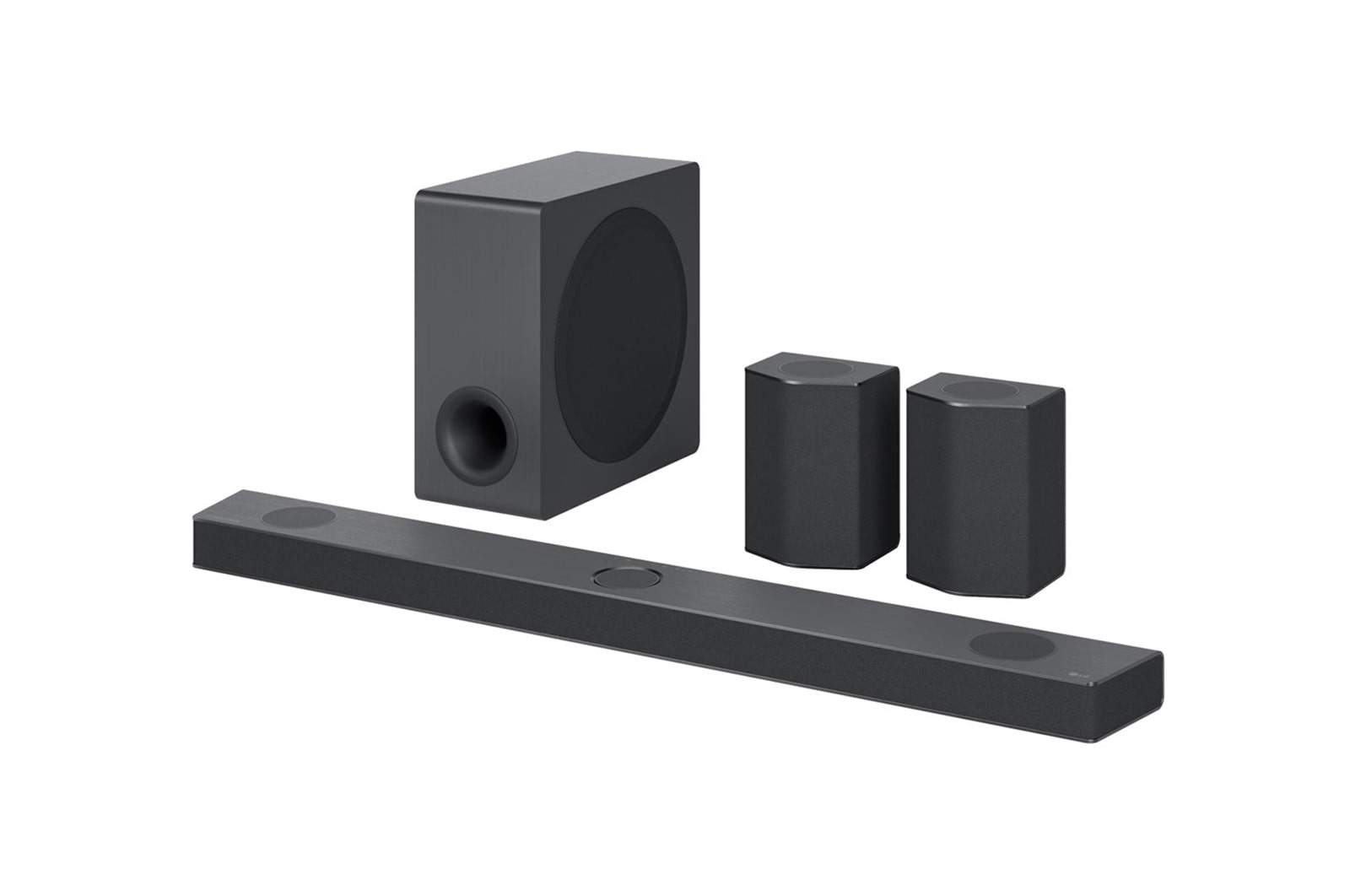
Pros
- Terrific Dolby Atmos and DTS:X performance
- Center upfiring driver bolsters dialogue
- AirPlay 2 and Chromecast support
- AI-powered room correction
Cons
- Glitchy Wi-Fi setup
- Power cords for rear speakers are too short
- Pricey
It costs a cool $1,800 and we wish the power cords for the rear speakers were longer, but if you’re looking for the very best in Dolby Atmos and DTS:X performance from a soundbar, the LG S95QR is tough to beat. Equipped with an extra height speaker for the center channel, the LG S95QR puts you in a bubble of thrillingly immersive sound, and it also boasts AirPlay 2, Chromecast, and AI-powered room correction.
Sony HT-A5000 — Best high-end soundbar and wireless speaker package
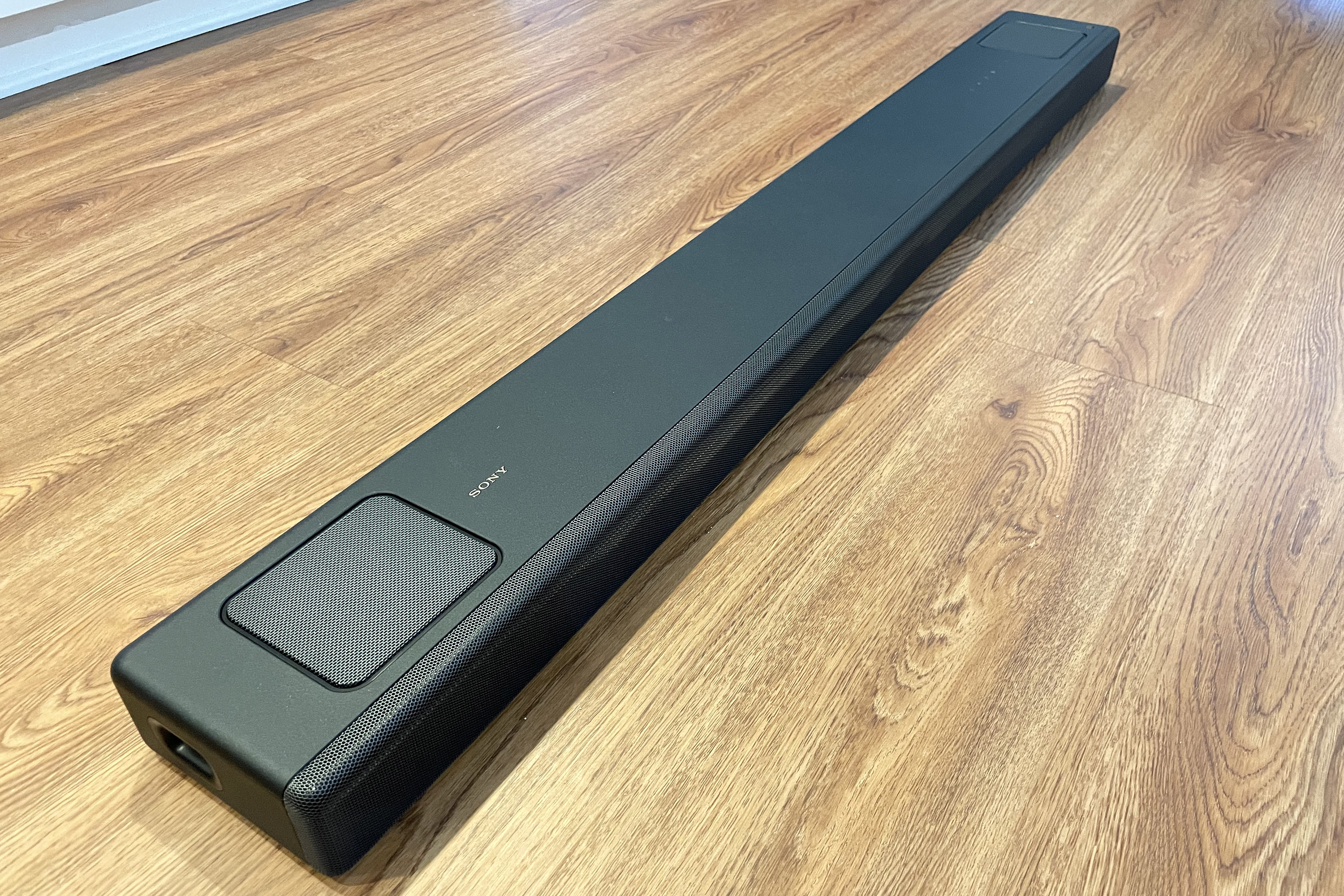
Pros
- Delivers a theater-like experience with a fully wireless speaker setup
- Immersive Dolby Atmos performance
- Frictionless setup and sound field optimization
- Can use the speakers in certain Sony TVs as the center channel
Cons
- Optional SA-SW3 subwoofer calls attention to itself
- Some boxiness to the sound, particularly with music
Plenty of all-on-one soundbars and compatible with wireless subwoofers and surround speaker kits, but Sony has really knocked it out of the park with the HT-A5000. Accompanied by the optional–and truly wireless–SA-RS5 rear speakers and SA-SW3 subwoofer, the HT-A5000 delivers an immersive and practical solution for audio enthusiasts looking to customize their speaker setups without dealing with a snarl of wires, while one-touch sound field optimization makes it easy to quickly change speaker positions. The total cost of all three Sony components is just shy of $2,000, however, and we detected a certain boxiness to the audio, particularly in terms of music.
A slightly less expensive but still impressive option is the Sony HT-A3000, a 3.1-channel soundbar that we also tested with the SA-RS5 rear speakers and SA-SW3 sub.
Bang & Olufsen Beosound Theatre — Best money-is-no-object soundbar
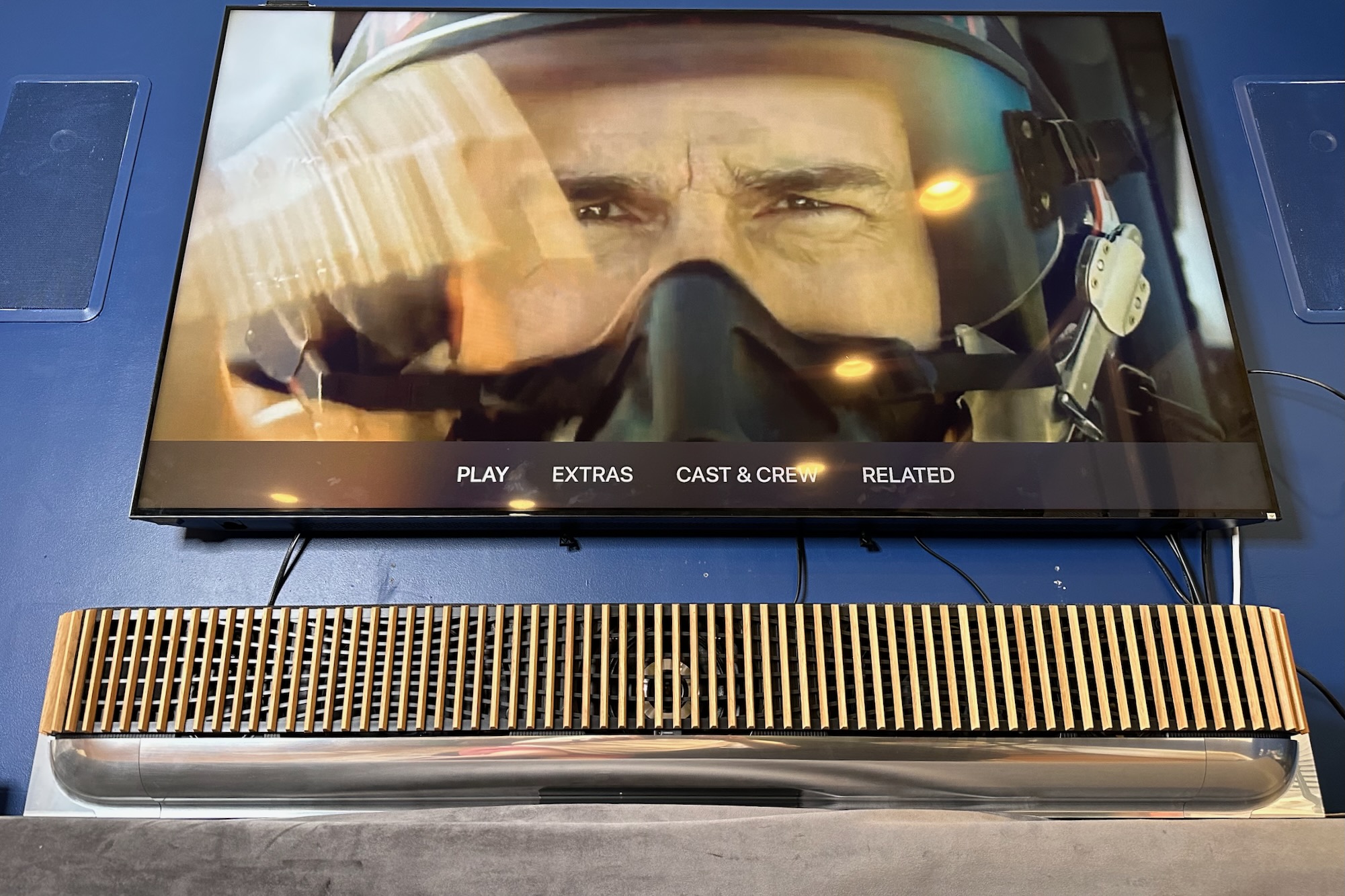
Pros
- Big, bold, dynamic, full-range sound
- Customizable aesthetic elements
- Expandable to 16 assignable speakers
- Advanced room correction
- AirPlay 2, Chromecast, and Spotify Connect support
Cons
- Room correction offers a single measurement point only
- Expensive
- Lacks LDAC or aptX Adaptive hi-res Bluetooth streaming codecs
A luxurious high-end soundbar with a stratospheric price tag to match, the Bang & Olufsen Beosound Theatre represents the pinnacle of what a soundbar can be. Marrying eye-catching aesthetics with high-tech performance, the Beosound Theatre delivers big, bold, dynamic sound as a stand-alone unit, or you can expand it with up to 16 additional speakers. Advanced room correction is included, along with a bevy of inputs and even a four-port ethernet switch. A motorized wall mount is optional, as is white-glove installation.
What exactly is a soundbar?
A soundbar is typically a one- or two-piece speaker system whose primary purpose is to bring quality sound back to modern TVs (two-piece systems include a subwoofer). Soundbars are designed to appeal to people who can’t or won’t install freestanding loudspeakers. The former because of the the wiring requirements and/or expense associated with traditional home theater audio, and the latter because they object to the visual intrusion an A/V receiver and six or more loudspeaker cabinets presents.
The audio performance of nearly any soundbar will surpass the quality of just about any modern TV while consuming minimal space and requiring little more than a power cord and one or two cables. Soundbars are designed to fit in front of your TV if your TV is resting on a piece of furniture, or beneath your TV if it’s hanging on the wall. You can even find soundbars from TV manufacturers that are designed to match the aesthetic of the TV it’s paired with, and some of those models deliver extra features you won’t get if you pair the speaker with a different manufacturer’s TV.
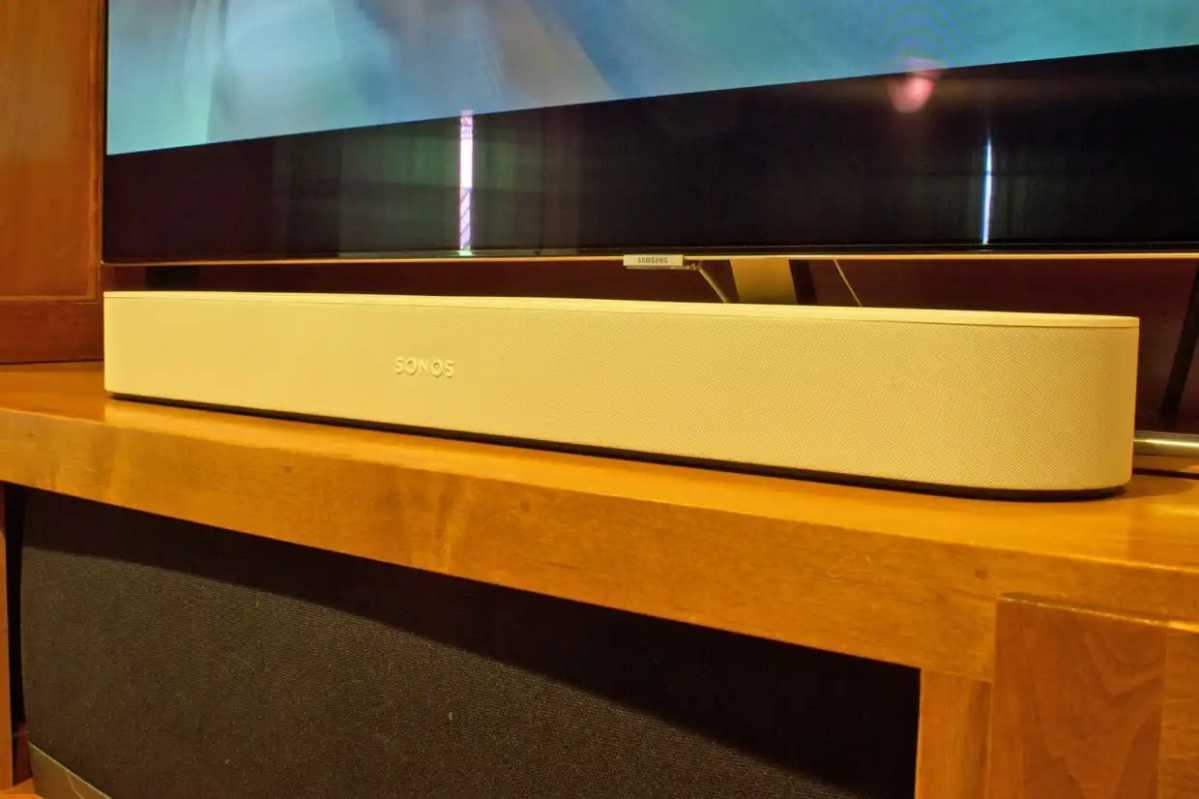
The vast majority of soundbars are low enough that they won’t block the lower portion of your TV’s screen when resting in front of it.
Michael Brown/Foundry
Nearly all modern TV and movie soundtracks are recorded in surround sound, so most soundbars are equipped to decode at least Dolby Digital and play back discrete left, right, and center channels, plus low-frequency effects (LFE). A great many models include a separate self-amplified subwoofer to handle LFE. Subwoofers are often wireless models needing only a power cable. Purchasing a soundbar doesn’t necessarily mean you’ll miss out on a full home-theater experience; in fact, some models offer optional surround speakers and others can even support object-based formats such as Dolby Atmos and DTS:X to deliver a sensation of height. The number of channels supported by an audio system uses the format X.Y.Z, where X represents the number of channels at or near ear level, Y represents the number of speakers that deliver low-frequency effects (LFE), and Z represents the number of speakers producing height cues. The speakers can be mounted in cabinets on stands, on the wall, or in the ceiling. With some soundbars, all of the channels are produced from the cabinet, with up-firing drivers bouncing height cues off the ceiling.
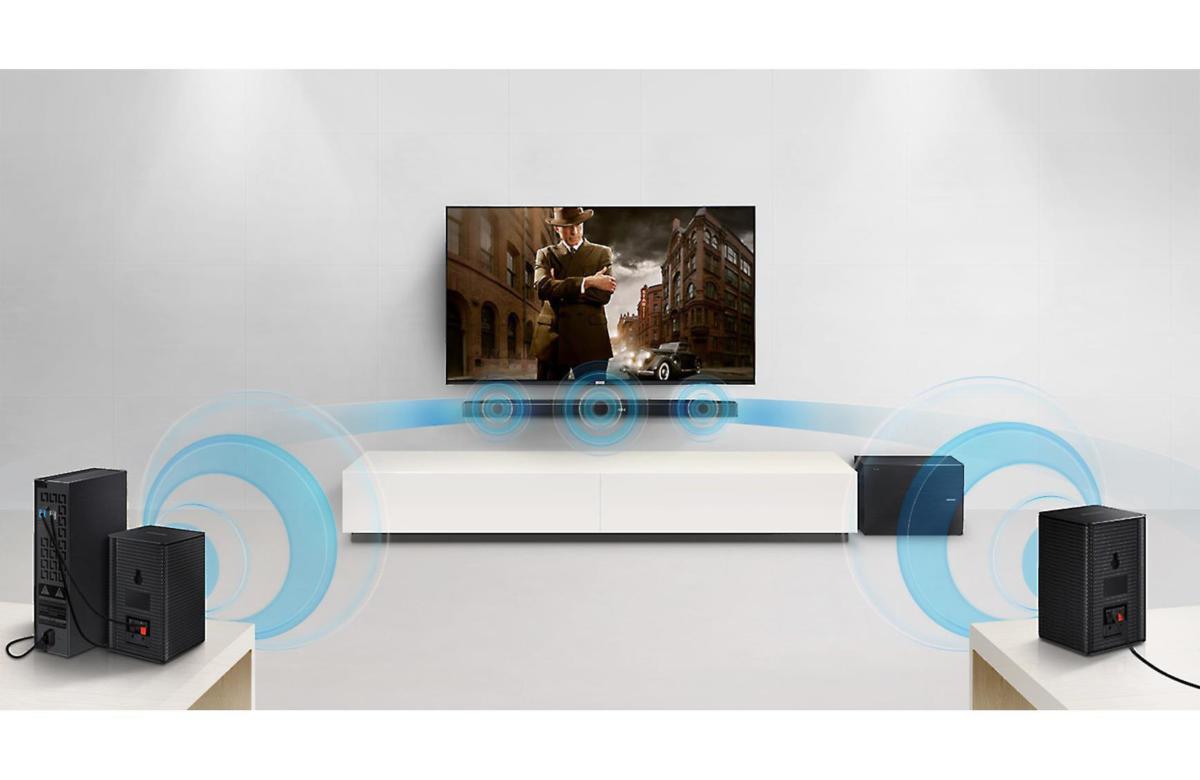
Adding Samsung’s SWA-8500S wireless speaker kit to its HW-M450 soundbar adds left and right surround speakers without the need to run cables to the back of your room.
What size soundbar should I buy?
Most people buy a soundbar that is either the same width or slightly narrower than their TV, but that really has more to do with aesthetics than audio performance. If your TV is on a piece of furniture, and you’re buying a soundbar that will sit in front of it, take the speaker’s height into consideration, so that it doesn’t encroach on the screen or block the TV’s infrared receiver. Some soundbars include an IR repeater for this reason.
Everything else being equal, the smaller the sound soundbar, the less room it has for larger speakers and features (codec support, wireless connectivity, multiple inputs and outputs, and so on). That’s not to say, however, that a bigger speaker will always sound better than a smaller one.
Do soundbars support Dolby Atmos and DTS:X?
Buying a soundbar doesn’t mean you need to give up an immersive home theater experience, but be prepared to pay for that feature. Most soundbars are two-channel stereo or left-, center-, and right-channel speakers. Many of these soundbars claim to deliver a true surround-sound experience.
For soundbars to achieve the magic of surround sound, they must rely on the shape of your room, sophisticated digital signal processing, and psychoacoustics. Consequently, your mileage may vary. Some rooms will be more conducive to a good surround-sound experience than others. Some soundbars eschew this artificial processing and offer you the option of adding surround speakers, often wireless ones, to deliver a true 5.1-surround sound.
More soundbars are starting to support Dolby Atmos and/or DTS:X object-based audio. These soundbars have multiple speakers in the cabinet, some dedicated to left-, center-, and right-channel duty while others handle the surround and height cues. Most soundbars in this class support 5.1.2- or 7.1.2-channel setups, rendering only the front height channels. Once again, you’ll need the right kind of room—with the right kind ceiling—to take advantage of an object-based audio soundbar.
Do I need an A/V Receiver with a soundbar?
Nearly all modern soundbars are active speakers, meaning they’re more or less self contained with their own amplifier, digital signal processing, and volume control, all in the same cabinet as the drivers. Some active soundbars can even accommodate multiple HDMI sources. If you choose a model with HDMI support, make sure it has at least one HDMI port that supports the audio return channel (ARC). This will reduce the number of cables you’ll need between the soundbar and your TV. Models that support the newer enhanced Audio Return Channel (eARC) are even better, because they can decode the higher-resolution audio codecs Dolby TrueHD and DTS-HD Master Audio. The original ARC doesn’t have the bandwidth for this.
A passive soundbar relies on the amplifier in an A/V receiver, just like a traditional loudspeaker. You connect the audio output from your TV (along with your Blu-ray player, media-streamer, and other components) to the A/V receiver’s inputs and the passive soundbar to the A/V receiver’s loudspeaker connections. The A/V receiver amplifies the signal and sends it to the speaker.
Soundbar features you should look for
Sorting through different soundbars can be a dizzying experience. Here’s an alphabetized list of some of the most important features you’ll encounter
App control: If you want to control everything from your smartphone or tablet, you’ll want to know if the manufacturer offers an app for your mobile operating system of choice.
ARC: The acronym stands for Audio Return Channel. First introduced with HDMI 1.4, ARC enables your TV to send its audio output back through the HDMI cable to your soundbar or A/V receiver. This is especially important if you’re using your smart-TV’s onboard tuner or any of its media-streaming apps (Netflix, YouTube, Vudu, etc.). A newer variant, eARC (enhanced Audio Return Channel) provides more bandwidth than the original ARC, enabling it to handle lossless high-resolution audio, including Dolby True HD and DTS:X. This article provides in-depth explanations of both HDMI ARC and HDMI eARC.
Dialog enhancement: If you find yourself turning on closed captions because you can’t make out what people on your TV are saying, you might want to invest in a soundbar that offers dialog enhancement. This feature uses an algorithm that identifies frequencies commonly associated with speech and runs them through a digital signal processor to make them easier to distinguish from sound effects, music, and other background audio.
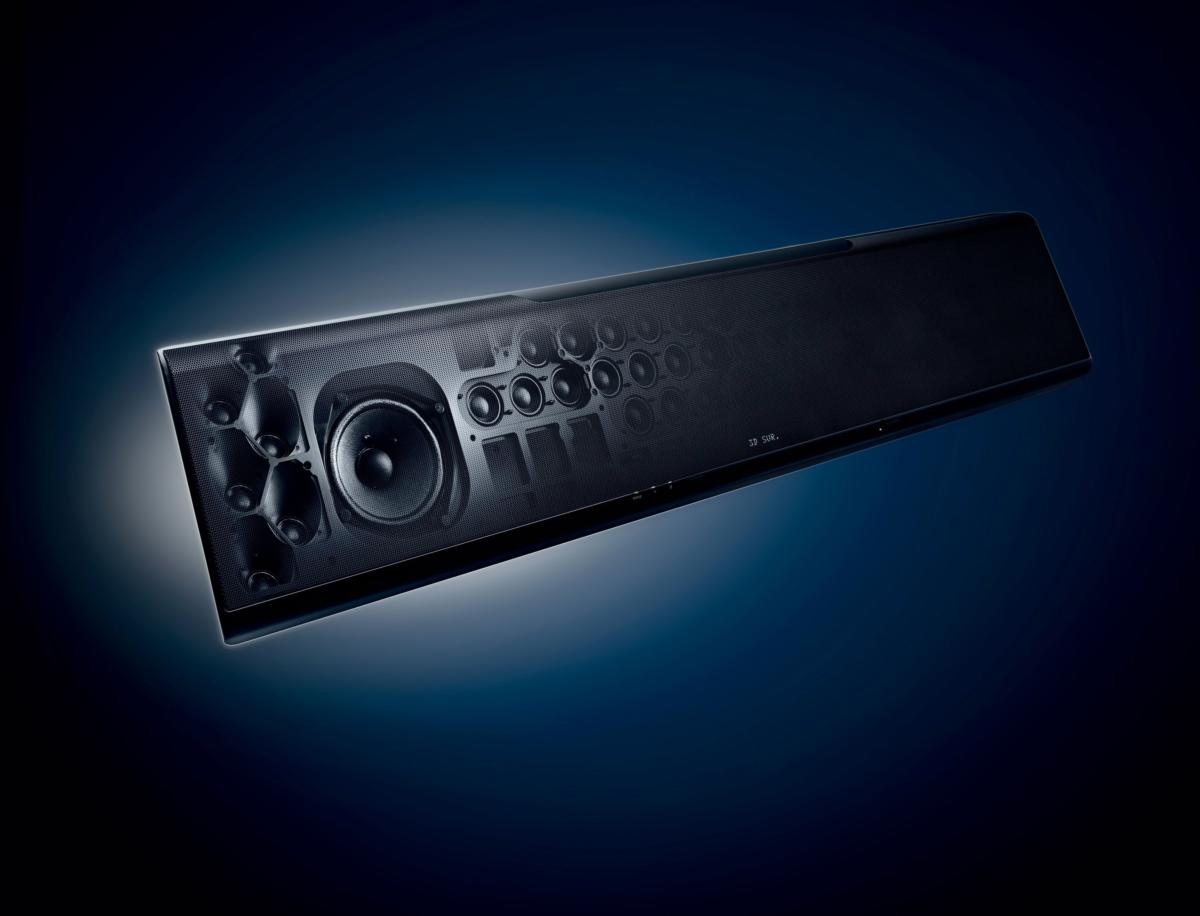
The Yamaha YSP-5600 is a 7.1.2 soundbar capable of supporting Dolby Atmos and DTS:X object-oriented audio formats. There are 44 beam drivers and two woofers in the sound bar that produce the surround and height effects.
Dolby Atmos and DTS:X: Some of today’s top-of-the-line soundbars will let you take advantage of the latest object-based audio technologies, such as Dolby Atmos and DTS:X. Some soundbars that feature object-based audio are limited to 5.1.2 or 7.1.2 configuration, meaning they only reproduce the two front height effects channels. (A 5.1.2-channel system has front left, center, front right, left surround, right surround, subwoofer, left height, and right height. A 7.1.2-channel is the same configuration plus left rear surround and right rear surround.)
EQ: Some soundbars have onboard EQ (equalization) to help tune the soundbar for a particular placement, such as on the wall or in a cabinet. The EQ adjusts certain sonic characteristics that happen to the speaker in a typical scenario. Don’t confuse EQ with room correction. Room correction far more sophisticated (we’ll cover that lower down).
HDMI If you don’t already have a 4K UHD TV that supports HDR (high dynamic range), the next set you buy probably will. You can learn more about HDR in this story, but it basically pumps up the contrast to reveal more detail and produce vibrant color. You’ll need a soundbar that supports HDMI 2.0a or later to ensure HDR information is passed through the soundbar from the source (e.g., an Ultra HD Blu-ray player) to your television.
Lossless audio: Do you have a growing collection of high-resolution music files in FLAC or ALAC formats? If you want to listen to them through your soundbar, you’ll want to make sure it can decode those files.
Multi-room audio: Many soundbars can be components in a multi-room audio system, so you can hear music all over your house. Sonos is the king in this category, and its technology allows you to combine multiple speakers into a true surround-sound system. You can put a Sonos soundbar at the front of the room, for instance, and use a pair of Sonos Ones as surround channels in the back of the room, with a Sonos Sub handle low-frequency effects. Apple’s AirPlay technology is also very popular and many speaker manufacturers–including Sonos–supports it in addition to its own technology. Denon has its own solution for its speakers (Heos) and so does Yamaha (MusicCast).
Music streaming: Many of today’s soundbars can stream music over Wi-Fi or Bluetooth, but only a handful support Bluetooth with aptX or–better yet–aptX HD or aptX Adative for CD-quality streaming. Apple’s AirPlay comes into play here as well, especially for people who use iPhones and iPads. Audio enthusiasts will want to know if the soundbar can decode lossless codecs such as FLAC and ALAC.
Room correction: Your room plays a critical part in how your soundbar will sound. Some manufacturers, such as Paradigm, build sophisticated and highly effective room-correction technology into their soundbars. Sonos’ TruePlay is also incredibly effective. The sonic benefits of a good soundbar with well-implemented room correction can be jaw-dropping.
Subwoofer support: If you love good, deep bass, and you want to hear all the low-frequency effects in movie soundtracks, you’ll want to scope out a soundbar that can connect to a subwoofer. Some soundbars come pre-packaged with a sub (in many cases, a wireless model), while others provide a subwoofer output so you can use a cable to hook up your model of choice. The pre-packaged route might look attractive, but it typically means you can’t upgrade either component without junking them both.
Soundbars that didn’t make the cut
Now that you’ve seen our top picks in three price categories, you might be wondering about other models that didn’t make the cut. In many cases, it will have been a close call. In others, the speaker just didn’t the value or the experience we demand. In still others, a soundbar that won our Editors’ Choice award has been bested by a new contender.
Our CineHome Pro | CineHub Edition THX Certified review concluded that this system is more than a soundbar, it’s a high-end wireless home theater system with six discrete speakers and a massive 10-inch subwoofer. What it lacks is support for Dolby Pro HD and DTS HD Master Audio, not to mention Dolby Atmos and DTS:X. If you’re looking for a soundbar that delivers an immersive audio experience, take a look at our JBL Bar 9.1 review. This high-end soundbar boasts truly wireless surround speakers–they’re battery powered! Many of our fellow critics have swooned over Sennheiser’s first soundbar, but our home theater pro wrote in his Sennheiser Ambeo Soundbar review that this very expensive 5.1.4-channel audio system failed to create a fully immersive audio experience.
Yamaha builds some great mid-range and higher audio gear, but our Yamaha YAS-209 soundbar review discovered a speaker that sounds “distractingly harsh” while operating in DTS Virtual:X-powered 3D surround mode. It does have Alexa built in, though, and Yamaha’s MusicCast is one of the best multi-room audio systems on the market. Our Sony HT-G700 soundbar review faulted the manufacturer for not supporting Wi-Fi in this mid-priced speaker, but we did like the speakers “crisp, punchy sound. Chromecast is a popular multi-room audio platform, and it was one of the bright spots in our Polk Audio MagniFi 2 soundbar review, but we weren’t as enthused with this system’s bundled subwoofer.
It is possible to get a good experience with a budget-priced soundbar, but shoppers at this level need to take care to avoid the type of dreck we found in our Tribit Soundbar review. Selling for $120 at the time, it’s still no bargain at a current street price of just $60. Sonos’s new budget soundbar, the Sonos Ray, delivers impressively full-bodied sound, but it’s held back by its lack of an HDMI port, an omission that’s hard to understand for a soundbar made in 2022. Panasonic surprised us in our Panasonic SoundSlayer review, where the speaker delivered a great gaming-oriented near-field experience, but it won’t be what everyone is looking for.

